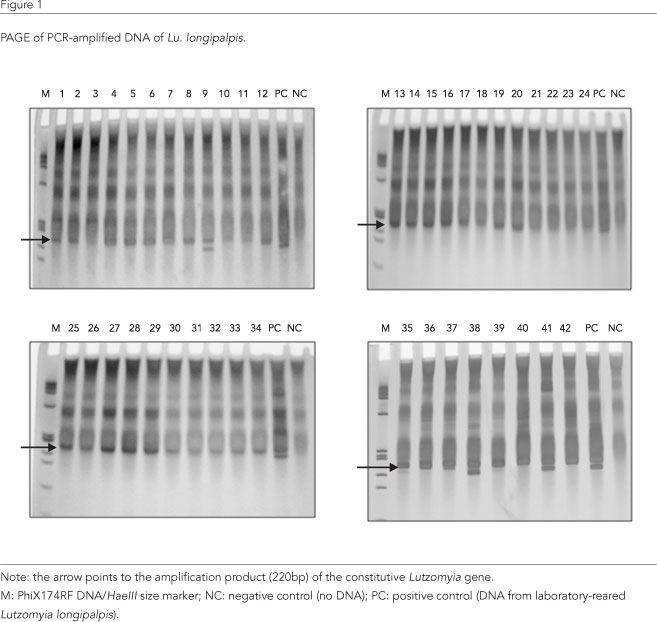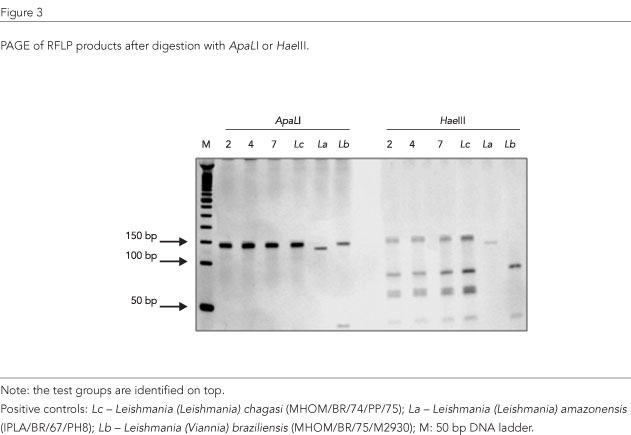The American visceral leishmaniasis (AVL) is caused by parasites belonging to the genus Leishmania (Trypanosomatidae) and is transmitted to humans through the bite of certain species of infected phlebotomine sand flies. In this study, we investigated the natural infection ratio of Lutzomyia longipalpis, the main vector species of AVL in Brazil, in Várzea Grande, Mato Grosso State. Between July 2004 and June 2006, phlebotomine sand flies were captured in peridomestic areas using CDC light-traps. Four hundred and twenty (420) specimens of Lu. longipalpis were captured. 42 pools, containing 10 specimens of Lu. longipalpis each, were used for genomic DNA extraction and PCR (polymerase chain reaction) amplification. Leishmania spp. DNA was detected in three out of the 42 pools tested, resulting in a minimal infection ratio of 0.71%. Restriction fragment length polymorphism (RFLP) analysis indicated that Leishmania (L.) chagasi was the infective agent in the positive pools.
Psychodidae; Insect Vectors; Leishmaniasis




